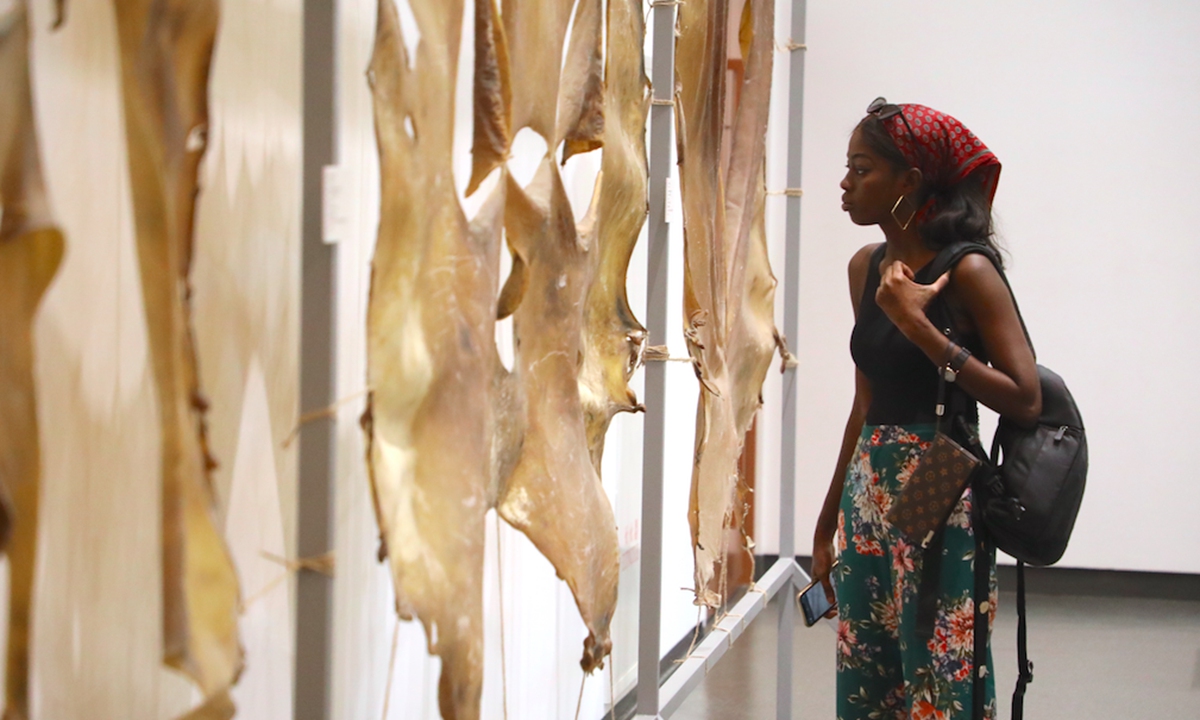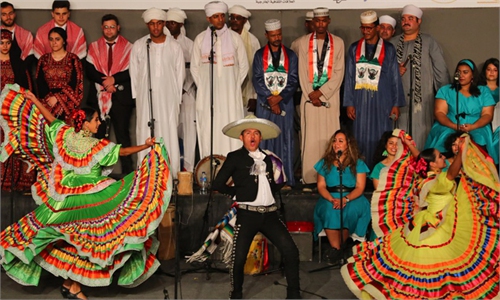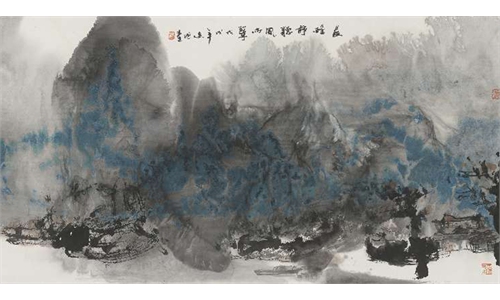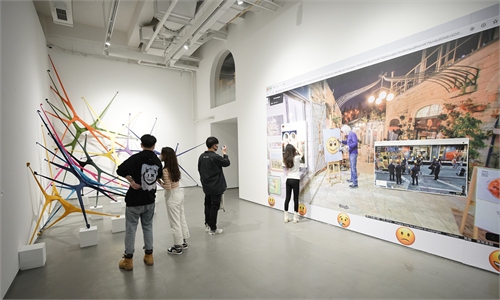ARTS / ART
China-Senegal ties highlighted at Biennale of Contemporary African Art

Visitor at the event Biennale of Contemporary African Art in Dakar Photo:Courtesy of Yue Jieqiong
Forging: out of fire is the theme for the ongoing Biennale of Contemporary African Art in Dakar, capital of Senegal. After a hiatus in 2020 due to COVID-19, the show's unchanged theme asks a question against the backdrop of Senegal's historical civilization: How should we view the country's thriving contemporary art, which is deeply rooted in Senegal's ancient legacy with respects to its creative power?China, for the first time ever to be the biennale's guest country of honor, seeks to answer this question with its pavilion themed transition/active energy.
The pavilion's chief curator Yue Jieqiong noted to the Global Times that 24 Chinese artworks are on display. Such artworks aim to exchange views with local creators on exploring how indigenous arts energized by cultural pride have emphasized the country's importance on the global stage.
Inside " Black Civilization"
The Chinese pavilion is located at the biennale's Museum of Black Civilization. Led by the The origin of mankind exhibition at the display hall entrance, the location hints at the connection between the two countries in that the earliest human origins can be traced to Africa.
"The interconnection of world civilizations exists without territorial limitations," Wu Jian'an, an artist who brought his contemporary art piece to Senegal, told the Global Times.
The 24 artworks on display at the Chinese pavilion are the works of 12 Chinese artists.
"These creators are examples showing how China's diverse contemporary art has evolved. By having them in Dakar, we aim to show local people our changing art experiences, especially after the reform and opening-up," Yue told the Global Times.
Wu, who has long been intrigued by Chinese folk "shadow" culture, also known as piying, and traditional paper cutting, has brought to the event his work Plain Faces, a cow leather work that channels China and Africa's shared mask-making traditions. By letting the leather freely shrink and dry into shape, Wu sets his contemporary art apart from the folk art.
Other Chinese artists like Li Hongbo and Wang Chuan had brought paper artworks and blurred pixelated photographic images that examine how traditional Chinese elements such as blue and white porcelains, bronzes and calligraphy works are viewed in the 21st century art framework.
When visiting the China pavilion during its opening, Senegalese President Machy Sall told media that he admired Chinese creators' ingenuity when it comes to incorporating tradition and culture in art.
Yue noted that compared to the high-tech gilded China pavilion "meta-space" at the 2022 Venice Biennale in Italy, the Chinese pavilion in Dakar focuses on exhibiting China's "cultural attributes." Additionally, similar to how the biennale focuses on the improvement of African art through constant refinement, Yue said the two countries have cultural confidence in common.
According to Yue, China helped Senegal build the Museum of Black Civilization. This is not the first time that China has lent a helping hand to an African country. In 2011, China provided $200 million in funding to build the AU Conference Center and Office Complex, the headquarters of the African Union in Addis Ababa, Ethiopia, thus further strengthening communication and collaboration between China and Africa.
Shared culture pride
Looking at Senegal's history, which is deeply intertwined with French colonialism, the country's search for "black pride" in art was an inspiring gist for African intellectuals who called for black identity to be a unifying symbol of pride, such as Léopold Sédar Senghor, Senegal's national poet and its first president.
Along with Senghor and other figures like Martinican author Aimé Césaire, Négritude, a milestone movement that started in the 1930s, aimed to encourage people of African descent living around the world to celebrate their "blackness" and find an independent African art footing to critically examine the impact Western values had on African culture.
Though the ethos is almost 100 years old, Yue indicated that the movement still inspires today's African artists to answer global questions such as feminism, gender issues and migration with their value incorporated.
For instance, at the biennale, Nigerian artist Tyna Adebowale scrutinizes feminism through paintings portraying black women with pipe.
"This time we are exploring paths to further collaborate with African artists. In the future, China-African art exchanges can continue in various ways such as themed and duo artist exhibitions," Yue said.
"We are working to enhance our global discourse power through art."
Before 2022, Chinese artists began participating in the biennale in 2014. Founded in 1989, the first Dakar Biennale debuted in 1990 as a literature program at first.
The 2022 iteration is dynamic in that many local hotels and restaurants have transformed themselves into art venues.
The event is scheduled to end on June 21.



